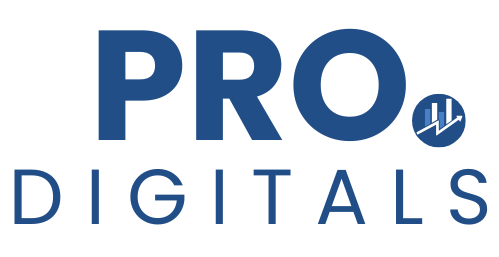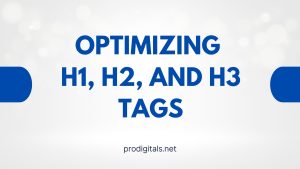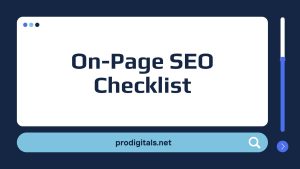Keyword research is a key part of making sure people find content online. By understanding which words or phrases people search for, anyone can make better decisions about what to write or advertise. This can help websites attract more of the right visitors and grow their audience.

Finding the right keywords is not just about picking the most popular terms. It’s about figuring out what people really want when they search and choosing keywords that match those needs. Free tools like WordStream’s Free Keyword Tool and Google’s Keyword Planner can make this process much easier and faster.
Key Takeaways
- Finding the right keywords improves content visibility.
- Understanding search intent helps target the right audience.
- Using the best research tools saves time and adds value.
What Is Keyword Research?

Keyword research is the process of finding and analyzing the words and phrases people type into search engines. It helps website owners, marketers, and businesses understand which terms are most likely to connect them with an audience interested in their content, products, or services. This practice supports smarter content planning and better performance in search engines.
Why Keyword Research Matters
Keyword research helps identify what users are actually searching for online. By understanding popular search queries, businesses can create content that answers people’s questions.
It allows organizations to target topics that matter most to their audiences. This leads to more relevant website traffic, higher engagement, and better chances of achieving business goals.
Some main reasons why keyword research is important include:
- Focusing on terms people use, not just industry jargon.
- Spotting trends in user behavior.
- Deciding which topics to prioritize in content strategies.
Done well, keyword research can keep a website competitive on Google and other platforms. Using tools such as Google Keyword Planner makes it easier to spot valuable keywords.
How Search Engines Interpret Keywords
Search engines use keywords to understand what each web page is about. When someone types a query, the search engine compares those words to billions of pages and identifies the most relevant results.
Modern search algorithms look at context, not just exact matches. This means search engines try to figure out the user’s intent. For example, searching for “buy red shoes online” will show ecommerce sites, while “how to clean red shoes” brings up guides and tips.
Clear use of keywords in titles, headings, and content helps search engines match a website’s pages with users’ needs. Accurate keyword use supports both visibility and relevance.
SEO and Digital Marketing Integration
Keyword research is a key part of SEO and digital marketing. It supports the process of search engine optimization by guiding decisions on which topics to cover.
Marketers use keyword data to plan what to write, what type of content to create, and how to structure websites. Optimizing for the right keywords can improve rankings, increase organic traffic, and help businesses reach specific audiences.
Keyword research also connects to advertising and social media campaigns, making it easier for marketing teams to align strategies across channels. This ensures that content and ads reach people searching for products, services, or information.
Understanding Search Intent

Search intent is the reason a person enters a keyword or phrase into a search engine. Knowing why someone searches helps make sure results match what they really want to find.
Types of Search Intent
Search intent falls into a few main categories. The most common types are informational, navigational, transactional, and commercial investigation.
- Informational: The user wants to learn something or get an answer to a question. Searches like “how to tie a tie” or “weather today” are informational.
- Navigational: The user is looking for a specific website or page, such as “Facebook login” or “YouTube.”
- Transactional: The user plans to buy something or complete an action. Examples are “buy blue shoes online” or “Spotify subscription.”
- Commercial Investigation: The user is considering a purchase and wants to compare options, like “best laptops 2025” or “Nike vs Adidas reviews.”
Matching content to search intent helps pages appear in front of the right audience. For more, see the breakdown on types of search intent.
Relevance and User Needs
When someone searches, they expect to see results that fit their intent. This is called relevance. Search engines use complex systems to match keywords with the most helpful answers.
For a website to be relevant, it needs to provide real value and satisfy the user’s needs for that search. For example, if the intent is to find a recipe, offering a list of ingredients and easy directions is key. If the intent is to compare products, then an honest side-by-side list works best. Learn more about matching keywords to what users want in this guide on user needs and relevance.
Focusing on intent and relevance increases the chance the page will be chosen from search results. It also creates a better experience because the information fits what the user actually wants.
Keyword Types Explained

Different types of keywords play a major role in how people find information online. Choosing the right ones can shape a website’s search engine visibility, attract the right visitors, and help content meet user intent.
Long-Tail Keywords
Long-tail keywords are phrases that are usually three words or more. They are specific and target a niche audience, which makes them less competitive and easier to rank for. For example, “best running shoes for flat feet” targets a precise search rather than a broad one.
These keywords help websites attract visitors who are looking for exactly what they offer. People using long-tail keywords are often further along in the buying process because they know what they want. This can lead to more conversions.
Businesses often find that focusing on long-tail keywords improves their chances of reaching a particular group of users. Using these detailed phrases can help smaller websites compete with larger brands that dominate broad keyword searches. More information about long-tail keywords can be found on the Semrush blog about types of keywords.
Short-Tail Keywords
Short-tail keywords, also called head keywords, are short and general. They are made up of one or two words, such as “coffee” or “laptops.” These keywords have high search volume, but they are very competitive and can be hard to rank for.
Because they are broad, short-tail keywords might bring in a lot of traffic, but not all visitors will find what they are looking for. For example, someone searching for “shoes” could be interested in many kinds of shoes, making it harder to meet their needs with just one page.
Websites using short-tail keywords need to be ready for lots of competition from big brands. These keywords work best for larger sites with strong authority in their field. More about the difference between short-tail and long-tail keywords is discussed on the Ahrefs blog’s list of keyword types.
Seed Keywords
Seed keywords are basic words or phrases that form the starting point for keyword research. They are often single words or simple phrases that describe a main topic, such as “bicycles,” “insurance,” or “recipe.” Seed keywords help guide the search for longer, more specific keywords.
Keyword tools use seed keywords to find related search terms, questions, and topic ideas. They are important because they help shape a content plan and organize keyword lists. People usually pick seed keywords that describe their products, services, or website focus before exploring variations.
Using strong seed keywords can make keyword research more efficient and focused. They help websites build a solid base for their SEO strategy. Readers can get a more detailed explanation of seed keywords and their use from Ahrefs’ guide to important keyword types.
How to Find Keyword Ideas

Keyword research starts by gathering a list of potential keyword ideas. There are different ways to discover valuable terms, such as brainstorming, using keyword suggestion tools, and looking into popular search trends.
Brainstorming Seed Keywords
To find new keyword ideas, it helps to begin with seed keywords. Seed keywords are basic words or short phrases directly related to a main topic or business.
For example, if someone owns a bakery, seed keywords could include bread, cakes, or gluten-free sweets. These basic terms are not usually long or complex. By writing down all relevant products, services, and topics, a person can make a strong foundation for later research.
It is useful to think about what target customers would type into search engines. Listing competitors and checking their websites is also a good way to gather seed keywords. This process does not require special tools but can be improved by getting ideas from friends, colleagues, or even customer questions.
Using Keyword Suggestions
After building a good list of seed keywords, the next step is to expand on them by using keyword suggestion tools. Tools like WordStream’s Free Keyword Tool or Google’s Keyword Planner let users enter a seed keyword and then view related keyword suggestions.
These platforms show important data such as search volume, keyword competition, and related terms. For example, entering “baking bread” could suggest other popular searches like how to bake bread at home or easy bread recipes.
With these tools, it becomes simple to discover long-tail keyword ideas, which are longer, more specific searches. This helps grow the initial keyword list and gives more ways to target what people are actually searching for online.
Analyzing Search Trends
Checking search trends helps people find keyword ideas that are growing in popularity or are highly sought after. By studying current trends, it is easier to spot new opportunities and avoid keywords that are losing attention.
Google Trends and social media hashtags are useful for analyzing what people are searching for right now. For instance, the increase in searches for sourdough recipes during early 2020 could be seen on trend charts. Questions and topics that suddenly become popular give useful clues about new keywords to target.
It is helpful to look for patterns or seasonal changes. For example, certain products may be searched more around holidays or during specific events. Combining search trend data with keyword suggestions makes the keyword research process stronger and more up-to-date.
Essential Keyword Research Tools

Accurate keyword research tools help find strong keywords, analyze traffic trends, and track ranking performance. The right tools help users spot competition, search volume, and opportunities for growth.
Google Keyword Planner
Google Keyword Planner is a free keyword research tool often used for SEO and pay-per-click campaigns. It gives data on search volume, competition, and cost-per-click for many keywords. Users enter one or more seed keywords to get a broad list of related searches and suggestions.
This tool is reliable because it uses real data from Google Ads. Keyword Planner also helps users filter keywords by language, location, and search network. The platform’s interface is straightforward, and even beginners find it easy to navigate.
The most important features include several data columns like average monthly searches, competition score, and top-of-page bids. Many businesses start their keyword research with Google Keyword Planner because it gives a clear overview of real trends and search habits.
Google Search Console
Google Search Console is not a standard keyword research tool, but it offers rich data on what keywords already bring traffic to a website. Users get a list of search queries, clicks, impressions, click-through rate, and average ranking position directly from Google’s index.
By reviewing this data, users can identify which keywords and queries are performing best, as well as spot new keyword opportunities. Google Search Console also points out underperforming keywords that may just need slight improvements in content or metadata.
It’s best for finding keywords connected to a site’s current pages instead of researching new topics. For website optimization, it is helpful for tracking performance tied to specific keywords and monitoring how changes impact search traffic.
Ahrefs
Ahrefs is a powerful keyword research tool widely used by SEO professionals. Key features include a vast keyword database, comprehensive keyword metrics, and competitive analysis. Users can see keyword difficulty scores, estimated search traffic, and the number of clicks each keyword gets, even after accounting for featured snippets and ads.
It also shows competitor keywords, backlink data, and top content ideas connected to each keyword. Ahrefs makes it easy to spot profitable keyword opportunities and track progress over time. Data can be broken down by country, device, and even by content type.
Ahrefs is a paid tool, but its depth of data gives a strong edge in keyword planning and strategy. Its keyword research features help users uncover hidden-long tail keywords while keeping a close eye on the competition.
Rank Tracker Features
Rank tracker tools allow users to monitor how keywords perform in search engine results over time. These features show daily, weekly, or monthly changes in position for each tracked keyword. Detailed rank data helps businesses understand which SEO changes are working and which keywords need more focus.
Most rank tracking tools let users group keywords, set up local or global tracking, and get notifications about significant ranking changes. Some popular tools include advanced visuals such as trend graphs and comparison tables that make results easy to understand.
These tools are essential for checking if new keywords rank after content updates or link building. By using rank tracker features, businesses can stay alert to changes and react fast to shifts in the search landscape.
Analyzing Keyword Metrics

Understanding keyword metrics helps website owners and marketers decide which keywords to target. They can use specific data points like search volume, keyword difficulty, and cost per click to plan effective strategies.
Search Volume and Trends
Search volume shows how many times people search for a keyword each month. Higher search volume can mean more potential visitors, but it also often means more competition. Examining monthly search volume can help users focus on keywords that attract enough attention to be valuable.
Trends reveal whether interest in a keyword is growing or shrinking. For instance, some keywords are popular only during certain times of the year, so checking historical data is important. Tools can track past keyword performance, helping people spot seasonality or long-term changes.
Google Trends can display how search interest changes over time. Being aware of both current search volume and how it changes lets users avoid targeting keywords that are losing popularity. Clear knowledge of search trends and historical data supports smarter decisions in keyword targeting.
Keyword Difficulty Assessment
Keyword difficulty measures how hard it would be to rank on the first page of search results for a particular term. Many keyword tools show a difficulty score, usually from 0 to 100, that reflects how strong the current top-ranking websites are for that keyword. High scores mean tough competition, often from bigger or older sites.
Sites with lower authority may want to focus on keywords with lower difficulty scores. This helps them stand a better chance of reaching the first page. Difficulty can depend on factors like backlink profiles, domain authority, and the content available on top-ranking pages, as explained in the Backlinko guide.
Proper keyword difficulty analysis allows people to build realistic strategies. Choosing the right keywords ensures steady growth instead of spending time and money on battles that are hard to win.
Cost Per Click and CPC Analysis
Cost per click (CPC) shows how much advertisers are willing to pay when someone clicks their ad for a keyword. High CPC usually suggests strong commercial intent, meaning businesses see value in catching people searching those keywords.
When analyzing CPC, marketers can spot keywords where paid ads are expensive but organic rankings might drive good returns. Comparing CPC with search volume helps find high-value targets that balance traffic potential and revenue.
Watching CPC over time can also reveal trends in how valuable a keyword is to advertisers. This insight is important in both paid and organic campaigns because keywords with high CPC are often more likely to convert users or bring in customers.
For a deeper look at finding and analyzing these keyword metrics, guides like Semrush’s overview break down key considerations.
Evaluating Competition and Opportunities

Evaluating keyword competition helps choose phrases that are easier to rank for and align with business goals. A solid approach can uncover low-competition keywords, reveal what competitors are doing, and help balance organic and paid search efforts.
Identifying Low-Competition Keywords
Low-competition keywords are terms that have less rivalry on search engines, making them easier to rank for. These keywords often have moderate search volume but are not targeted by many strong competitors.
To find these terms, users can look for keyword phrases that return fewer results in search engines, especially when using quotation marks. Tools like Google Keyword Planner and others can also display keyword difficulty scores.
Choosing low-competition keywords allows websites to gain organic traffic without fighting for space with major brands. New sites, in particular, benefit from these keywords because they can start ranking and bring in visitors sooner. For more detailed steps, visit this competitive keyword analysis guide.
SERPs and Competitor Analysis
SERPs (Search Engine Results Pages) show which sites are already ranking for a keyword. Examining these results reveals both the type of content that wins and how established the competing sites are.
By analyzing SERPs for keyword phrases, marketers can spot trends, such as whether the top sites are well-optimized and have strong link profiles. They can also notice if big brands or authority sites dominate the listings, which increases competition.
A close look at competitor pages helps identify content gaps and opportunities. Marketers can then target related keywords or improve their site’s quality to stand out. For step-by-step guidance on this process, check the Ultimate Guide to Keyword Competition.
Organic vs. Paid Search Dynamics
Choosing keywords involves deciding whether to target organic search or run a PPC campaign. Organic keywords bring visitors from unpaid search listings, while paid keywords require paying for ads.
Low-competition keywords often work well for organic traffic, since sites can rank naturally without constant ad spending. On the other hand, high-competition keywords might make sense in a PPC campaign, as paid ads can appear above organic results regardless of current rankings.
Combining both methods lets businesses get the best exposure. They can target easy wins for organic and invest in ads for highly competitive or commercial terms. Understanding this balance helps websites grow traffic efficiently and allocate their marketing budget wisely.
Keyword Strategies for Success

Effective keyword strategies help businesses target profitable search terms, increase conversions, and track the true financial impact of their SEO efforts. Success depends on focusing on high-value keywords, optimizing content for action, and measuring results with precision.
Building Profitable Keyword Lists
To build profitable keyword lists, businesses must find terms that match both search volume and relevance to their products or services. Search intent is important. For example, keywords like “buy running shoes online” signal a closer intention to purchase than just “running shoes.”
A mix of keyword types, such as short-tail and long-tail, is helpful. Short-tail keywords have high traffic but are more competitive. Long-tail keywords have lower search volume but can be highly profitable because they attract people further along the buying process.
Businesses should also evaluate keywords for competition levels. Using tools to check search volume and keyword difficulty helps find a balance between demand and achievability. Creating a structured keyword list using tools or spreadsheets makes it easy to prioritize keywords for different content or campaigns.
Optimizing for Conversions and Sales
Choosing keywords is only part of the strategy. Pages and ads must also be optimized to turn visitors into leads or customers. Keywords with strong commercial intent—like “best,” “buy,” or “discount”—usually perform best for sales goals.
Content should clearly match the keyword’s purpose. For example, a product page targeting “affordable standing desk” needs pricing details, features, and a clear call to action. Use headings, bullet points, and bold text to help shoppers make quick decisions.
Tracking which keywords bring conversions matters. With analytics tools, businesses can see which keyword targets perform best for online sales, signups, or other goals.
Measuring ROI and Revenue Impact
Measuring keyword return on investment (ROI) means tracking both the traffic and its effect on revenue. Setting up conversion tracking in Google Analytics or similar platforms is key. This lets companies see which keywords drive not just visits but actual sales or leads.
Calculating ROI is done by comparing the revenue earned from keyword-driven actions to the costs of SEO, content creation, or paid advertising. Use simple formulas, like ROI = (Revenue – Cost) ÷ Cost. Split keyword results by campaigns, landing pages, or product categories to find what is working best.
Reporting needs to focus on meaningful business outcomes. Sharing stats on sales, order size, or lifetime value from keyword campaigns shows real impact. For more on tracking keyword returns, see how to measure SEO and keyword ROI.
Advanced Keyword Analysis Techniques

Effective keyword analysis uses both content-specific tactics and long-term data trends. The following strategies give a practical edge in understanding SEO keywords and boosting content performance.
Keyword Density and Content Optimization
Keyword density is the number of times a target keyword appears in a web page or article compared to the total word count. A balanced density helps search engines know what the content is about, but overusing keywords (known as “keyword stuffing”) can hurt rankings.
A good practice is to keep keyword density between 1% and 2% for main SEO keywords. Use synonyms and related terms to cover the topic more naturally and avoid repetitive language.
Tips for optimizing content:
- Place main keywords in the page title, first paragraph, and subheadings.
- Use lists or tables to organize information around important SEO keywords.
- Refresh older pages by replacing overused keywords with more natural phrases.
Content should always put the reader first. Tools such as Google Keyword Planner can help monitor keyword density and suggest additional keywords to improve relevance.
Leveraging Historical Data
Studying historical data shows how keyword performance has changed over time. This reveals seasonal trends, rising search terms, or drops in keyword popularity.
By tracking past keyword rankings and organic traffic, marketers can find patterns to inform future SEO keyword research. Look for keywords that gained or lost visibility and adjust strategies as needed.
Ways to leverage historical data include:
- Comparing monthly or yearly data to spot long-term changes.
- Using insights to find new keyword targets or retire less effective ones.
- Analyzing which content updates led to traffic increases for specific SEO keywords.
Many advanced keyword research tools allow users to review old data and generate reports that help shape content plans. Detailed strategies are covered in this guide on advanced keyword research.



